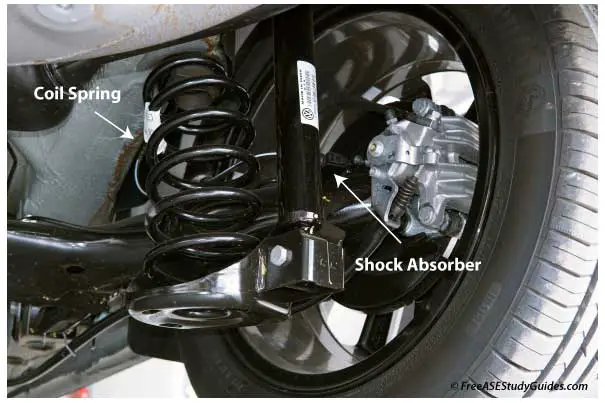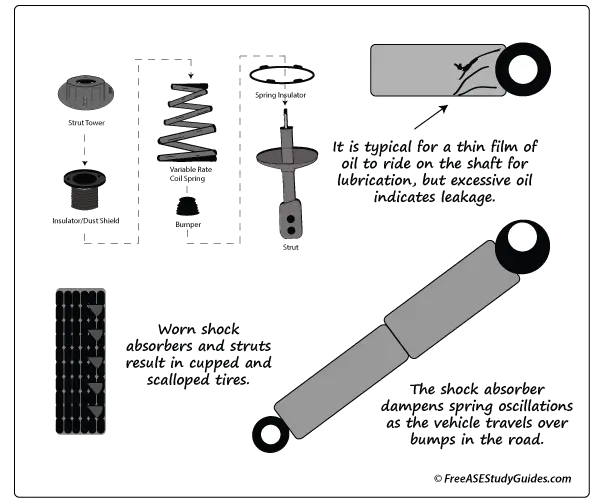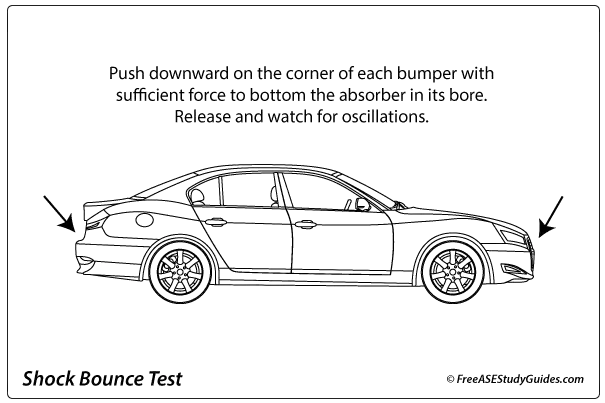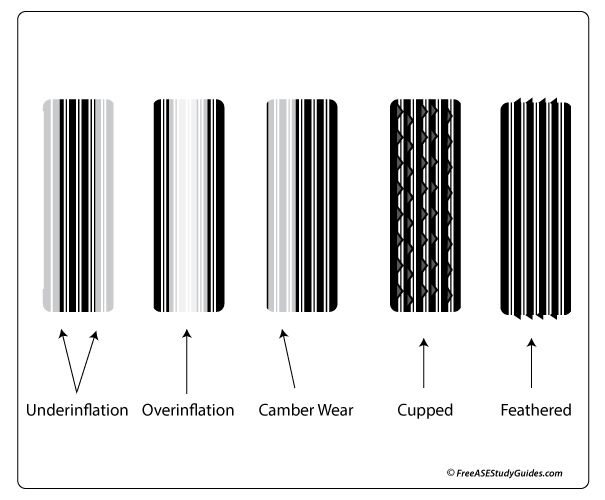Shock Absorbers and Strut Inserts

Shock absorbers and strut inserts dampen the oscillations and bounce from the suspension coils passing over bumps in the road. Test a shock absorber's ability to return to normal by carefully pressing down on the bumper at the side with the weak shock. Be careful not to damage the bumper.

A good shock absorber quickly comes to rest and returns to normal. A faulty shock or strut continues to bounce. It's because the weak shock absorber allows the coil spring to continue to oscillate.
Cupped Tires

Bad shocks and struts cause cupped tires. Perform a bounce test on the shocks to see if they oscillate, and test drive the vehicle to see if it floats and leans excessively around corners.

Bad shocks result in cupped tire treads. Tire wear can also indicate a worn steering or suspension component, an over or under-inflated tire, or a misaligned vehicle.